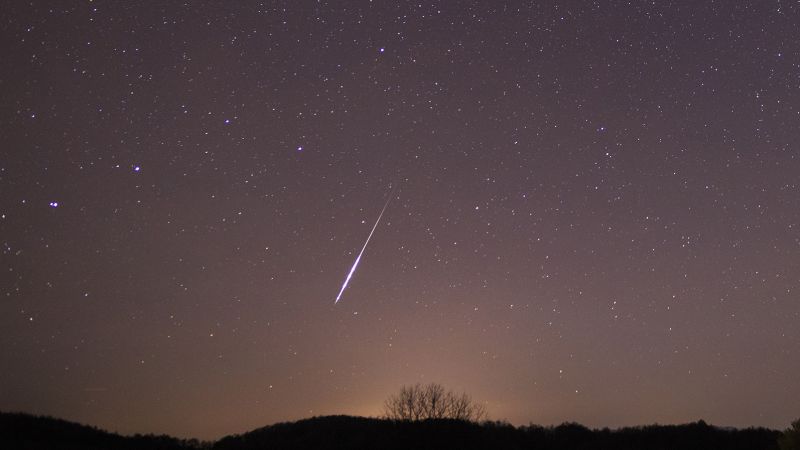Fireballs from the Southern and Northern Taurids from Comet Encke’s Super-Memories in the 1987-98 Swarm
The Southern and Northern Taurids are both active from October 13 to December 2. When the two showers are active simultaneously, there can be an increase in fireballs, especially during a Taurid swarm year such as this one.
At points where Earth is close to the center of each stream, the showers reach their peaks. The swarm results when Jupiter is close enough to pull on the streams with its gravity, causing debris to condense and creating a spike in fireballs. The last time it happened was in 2015, and there was a seven-year repetition predicted by the society.
Mike Hankey, operations manager and creator of the fireball tracking program for the American Meteor Society, said that it was a shower that produced a lot of fireballs. “It’s always been known for fireballs, but we can definitely see an uptick in the data every day this month. There has been a lot of fireballs.
The Southern and Northern Taurids both derive from components of Comet Encke, which has the shortest orbit around the sun of any major comet in our solar system at a little more than three years. Every time Encke passes Earth in its orbit, it leaves a new trail of debris, making it a large producer of meteoroids. It takes our planet several weeks to pass through the shower because of the strain.
Taurid meteors tend to move slowly but sometimes are very bright, depending on their size. NASA says that comets bigger than a meter tend to shine the fastest and look the best. Fireballs can be seen moving across the sky for a few seconds, whereas most meteors are visible only for a millisecond. The fireballs are often described as colorful, either red, orange or yellow.
“You won’t always see fireballs, but there are meteors every night of the year,” Lunsford said. “It’s something you can do inexpensively. You don’t even need a telescope; just your eyes are perfect.”
There are more than two dozen showers to watch in the next few years according to the guide. Here are the predicted peaks of the showers.
First observed in the mid-1800s, the shower initially delivered only 20 visible meteors per hour at maximum. Since then, the Geminids have reappeared every year, growing stronger in numbers. The August Perseids had an hourly rate of 50 to 100 meteors and by the 1960s, it had surpassed the event.
The Shower Will Be a Good Shower During the Moon’s Illumination, and the Behavior of the Atmosphere for Geminids
The shower will be a good shower even with the moon. “Find a decently dark sky, find something that will block the moon, maybe a building or a tree, and look away from the moon at the sky.”
Some models show the shower will increase in intensity and others say it will gradually decline over the next few decades, but it’s unclear how the Geminids will change in the future.
The asteroid is like a comet when it’s near the sun. It has an ellipse that is close to the sun, and it completes it every 1.5 years or so. The asteroid sheds its debris when it is close to Earth.
Since the southern hemisphere is at 2 a.m., it’s best to look toward the middle of the night. The position of the radiant will be low on the horizon and will also cause the meteors to appear at a reduced rate, Lunsford said.
Lunsford said that the best time to observe the radiant is between 1 and 2 a.m., when the moon is not setting. “The rates will probably be fairly similar at those times, too.”
The moon’s Illumination has affected Geminids watching for the past two years, but the meteor shower is expected to occur around a new moon in 2023, creating perfect viewing conditions.
When a meteorite burns in the atmosphere, you see something that has been out in space for a long time. By studying it, we can learn more about the comets. To the casual observer, they’re a nice firework (display) — meteor showers are nature’s fireworks.”
Bright, intense colors are often associated with the Geminids, according to the American Meteor Society. They’re visible across the globe, no matter your time zone, and will last all night.
Originating from the debris of an asteroid, the Geminids travel 78,000 miles per hour, over 40 times faster than a bullet, according to NASA. It’s highly unlikely for the meteors to reach the ground, since most Geminids burn up about 45 to 55 miles above ground, the space agency added.
How to get a look at the night sky from the back of a backwards man: The way to get out of the city
If you want to see the best thing, be away from the city or street lights. Lying on your back, facing south, is the best way to see the night sky. It can take about 30 minutes to get your eyes used to it.
